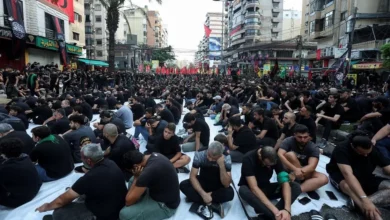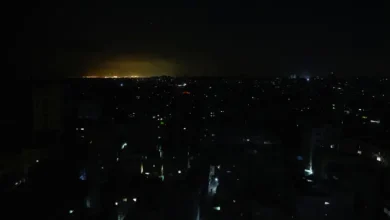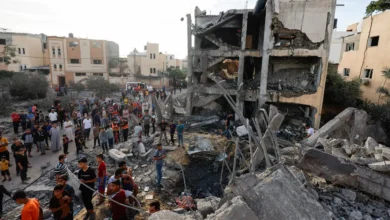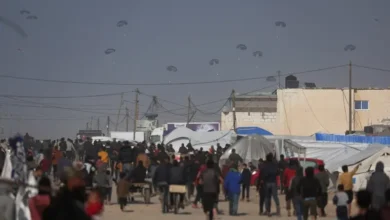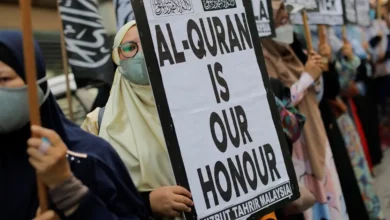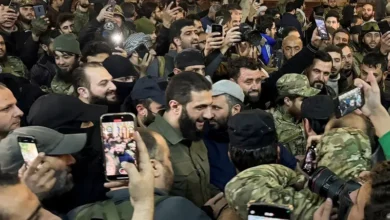Tanks poised around Gaza City; Netanyahu says Israel to run security in post-war Gaza
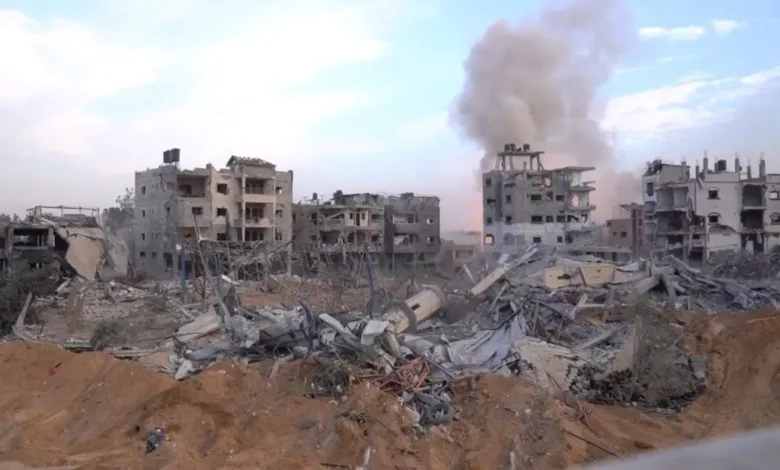
Israel gave civilians still trapped inside freshly encircled Gaza City a four-hour window to leave on Tuesday and escaping residents said they passed tanks in position to storm it.
Israel says its forces have surrounded Gaza City, home to a third of the enclave’s 2.3 million people, and are poised to attack it soon in their campaign to annihilate the Hamas militants who stormed Israeli towns exactly a month ago.
In some of the first direct comments on Israel’s plans for the future of Gaza after the war, Prime Minister Benjamin Netanyahu said Israel would take over responsibility for the territory’s security once it defeats the militants.
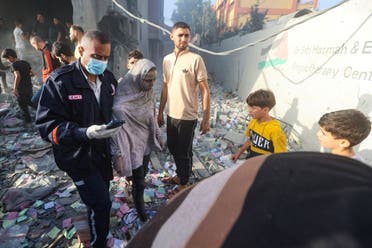
War began on October 7 when Hamas fighters burst across the fence enclosing Gaza and killed 1,400 Israelis, mostly civilians, and abducted more than 200, according to Israeli tallies. Since then, Israel has unrelentingly bombarded Hamas-run Gaza, killing more than 10,000 people, around 40 percent of them children, according to tallies by health officials there.
“It has been one full month of carnage, of incessant suffering, bloodshed, destruction, outrage and despair,” UN Human Rights Commissioner Volcker Turk said in a statement at the start of a trip to the region, during which he will visit the Rafah crossing from Egypt, the sole route for aid.
Israel gave residents a window from 10 a.m. to 2 p.m. to leave Gaza City. Residents say Israeli tanks have been moving mostly at night, with Israeli forces largely relying on air and artillery strikes to clear a path for their ground advance.
“For your safety, take this next opportunity to move south beyond Wadi Gaza,” the military announced, referring to the wetlands that bisect the strip.
A still image taken from an Israeli military video showed what the military said were Palestinians holding white flags as they moved south in a line. Hamas said the army had forced the people in the video to act that way to humiliate them.
Gaza’s interior ministry says 900,000 Palestinians are still sheltering in northern Gaza including Gaza City.
“The most dangerous trip in my life. We saw the tanks from point blank (range). We saw decomposed body parts. We saw death,” resident Adam Fayez Zeyara posted with a selfie of himself on the road out of Gaza City.
While Israel’s military operation is focused on the northern half of Gaza, the south has also come under attack. Palestinian health officials said at least 23 people were killed in two separate Israeli airstrikes early on Tuesday in the southern Gaza cities of Khan Younis and Rafah.
“We are civilians,” said Ahmed Ayesh, who was rescued from the rubble of a house in Khan Younis where health officials said 11 people had been killed. “This is the bravery of the so-called Israel – they show their might and power against civilians, babies inside, kids inside, and elderly.”
As he spoke, rescuers at the house used their hands to try to free a girl buried up to her waist in debris.
Netanyahu said Israel would consider “tactical little pauses” in Gaza fighting to let hostages leave or emergency aid to enter but he again rejected international calls for a ceasefire.
Gaza services are close to “breaking point” without fuel supplies, the UN humanitarian office said. Gaza’s interior ministry said all bakeries in the north were out of service due to Israeli attacks and lack of fuel.
Israel seeks ‘indefinite period’ of control
Israel has given few clear indications about what fate it sees for Gaza when the war is over.
Israel pulled its troops and settlers out of Gaza in 2005, and two years later, Hamas took power there, defeating the Palestinian Authority (PA) which exercises limited self-rule in a separate, Israeli-occupied territory, the West Bank.
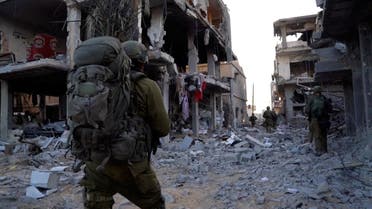
Asked who would be responsible for security in Gaza after Hamas was defeated, Netanyahu told US television’s ABC News: “I think Israel will, for an indefinite period, will have the overall security responsibility because we’ve seen what happens when we don’t have that security responsibility.”
Simcha Rothman, a lawmaker in Netanyahu’s religious-nationalist coalition said in a social media post: “Our forces must not shed blood to give the Gaza Strip to the Palestinian Authority wrapped in a bow … Only full Israeli control and a complete demilitarization of the strip will restore security.”
The White House, however, said US President Joe Biden does not favor an Israeli re-occupation of Gaza. “It’s not good for Israel, it’s not good for the Israeli people,” spokesman John Kirby said.
US Secretary of State Antony Blinken has been having conversations with leaders in the region about what governance of Gaza could look like after the war, Kirby told CNN. “Whatever it is, it can’t be what it was on October 6. It can’t be Hamas.”
While Israelis overwhelmingly support the military campaign to wipe out Hamas after last month’s attacks, there is some unease over whether Netanyahu’s far-right coalition has the diplomatic wherewithal to find a long-term solution for Gaza.
The leader of the opposition Labor Party, Merav Michaeli, said Israel needed to work with the United States, Arab countries and the PA on a plan for a “political victory” in Gaza to make Israel safe once Hamas is defeated militarily.
Military analysts have said permanently vanquishing Hamas’ well-entrenched forces is not a foregone conclusion.
Israel’s military said it had captured a militant compound in northern Gaza and was set to attack fighters hiding in a warren of underground tunnels. It released footage showing troops using bulldozers to dig up earth and knock over walls.
Israeli Lieutenant-Colonel Richard Hecht told reporters Hamas fighters were “popping out” from tunnels to fire rocket propelled grenades at Israeli forces.
“So we’re really putting an effort into taking out these tunnels as we move in and close in on Gaza City,” he said.
Both Israel and Hamas have rebuffed calls for a halt in fighting. Israel says hostages should be freed first. Hamas says it will not free them or stop fighting while Gaza is attacked.
‘My kids … have done nothing wrong’
Unrelenting horror stories of civilian suffering on both sides have polarized world opinion over the past month.
In Shefayim, Israel, Avihai Brodutch described 31 days of agony after Hamas abducted his wife and three children from Kfar Aza, a kibbutz about three km (2 miles) from Gaza.
“My kids, they’re so young, and they’ve done nothing wrong to anybody,” he said of his 10-year-old daughter Ofri and sons Yuval, eight, and Uriah, four.
Since last week, hundreds of Gazans who hold foreign passports have been permitted to exit through the Rafah crossing into Egypt. But the overwhelming majority are trapped inside the strip, and those who have been able to escape describe their torment at leaving loved-ones behind.
“It’s just a horror movie that keeps putting on repeat,” Suzan Beseiso, 31, a Palestinian-American who managed to leave Gaza for Egypt last week, told Reuters in Cairo. “No sleep. No food. No water. You keep evacuating from one place to another.”
